When a co-worker who once worked in New York City recommended I go to Lombardi’s for pizza while in Manhattan, I had no clue it was the first pizzeria in America. I knew Emily would not steer me in the wrong direction when it comes to pizza, but I was pleasantly surprised to learn about the spot it has in the history of pizza in America.
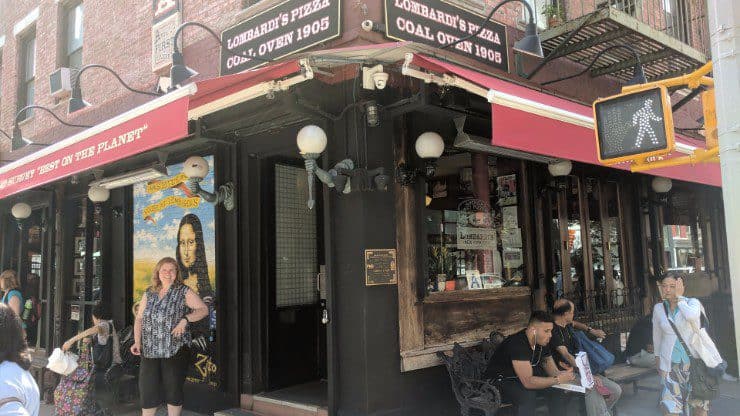
As I have written before, I grew up outside Boston, where they make what is called a New York-style pizza. Well, the New York pizza is based on the original pizza from Naples, sometimes called a Neapolitan pizza or Pizza Margherita, named for a queen of Italy. The Margherita pizza had sliced tomatoes, slices of fresh water buffalo mozzarella cheese and basil. The red of the tomatoes, the white of the cheese and the green of the basil represented the colors of Italy’s flag.
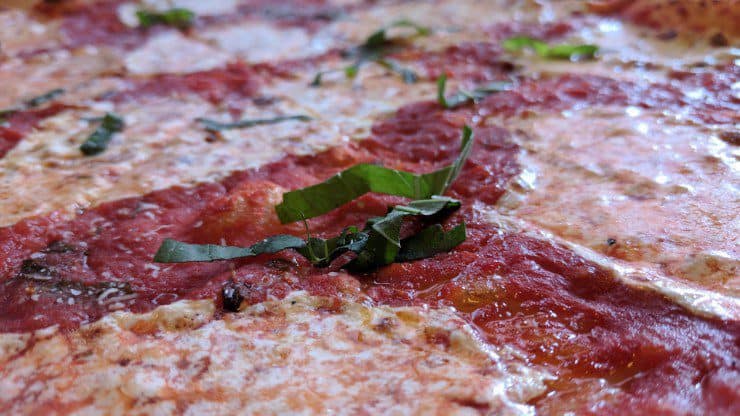
It was kind of interesting when my wife, Wendi, her sister, Randi, and Randi’s husband, Shaun, and me entered Lombardi’s. There were plenty of tables in the restaurant, but before we knew it, we were winding our way through the restaurant, past the pizza-making area, up a flight a stairs to this sort of ante-room upstairs.
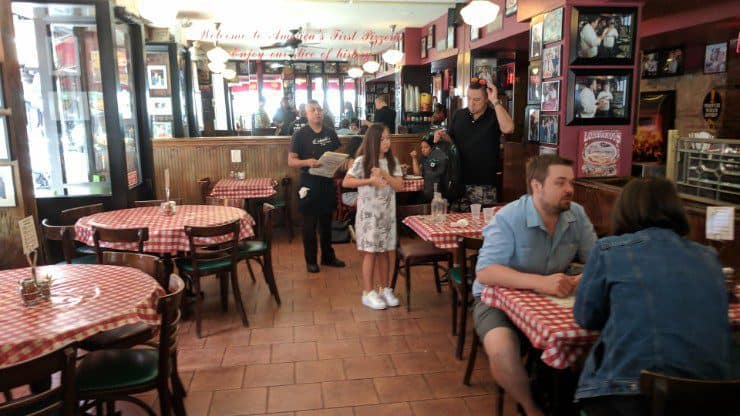
As for why we got the grand tour of Lombardi’s, I have no clue. But, I was eager to try pizza from America’s first pizzeria with a coal-fired oven.
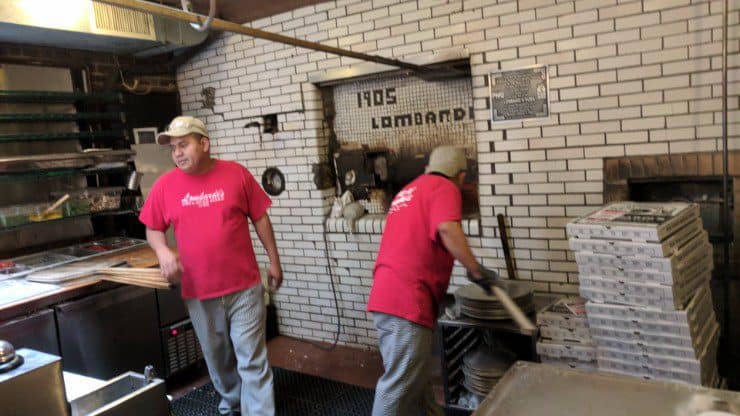
When I eat pizza, I really like only cheese on it. So, we got the Original Margherita: Fresh mozzarella, tomato sauce, grated Romano cheese and fresh basil. Typically, pizzas in this country are covered in shredded cheese. When our pizza came out, it was nice to see the slices of mozzarella. It was nice to see a pie close to a Neapolitan pizza. I say close for a couple reasons: Neapolitan pizzas are not made with a tomato sauce, rather whole San Marzano tomatoes that are ground in a food mill with a little bit of salt.

It was good to see some char on the pizza, too. Neapolitan pizzas are cooked in wood-fired ovens that reach high temperatures, allowing the pizza to cook quickly and the crust to char a little. This just adds to the depth of flavor.

As I wrote earlier, we had eaten pizza at Grimaldi’s (read about it here). It was a good pie, but I had some issues with it. The crust was almost like cardboard, very crisp, very firm. It did not have enough tomatoes on it for my liking. I believe Grimaldi’s uses a sauce, too. I should also mention, Neapolitan pizzas are about 9 inches in diameter. They are smaller pies, not like the big ones we enjoyed at Lombardi’s and Grimaldi’s.
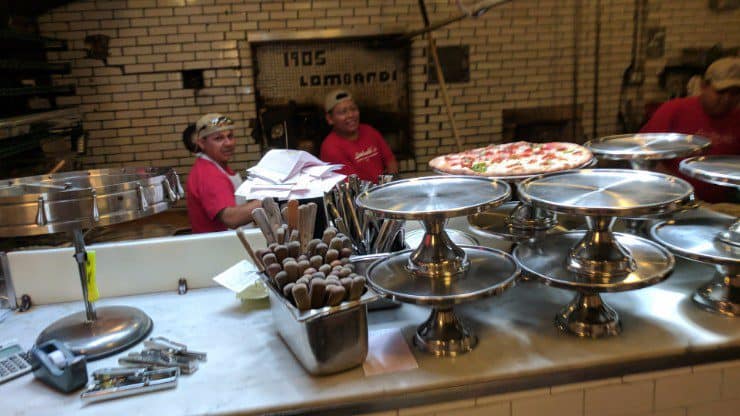
I believe I have seen Lombardi’s featured on the Food Network. When I saw the oven, I immediately recalled seeing it on the cable television channel. Coal-fired ovens get up to 2,000 degrees F, and they can cook a pizza in just a few minutes.
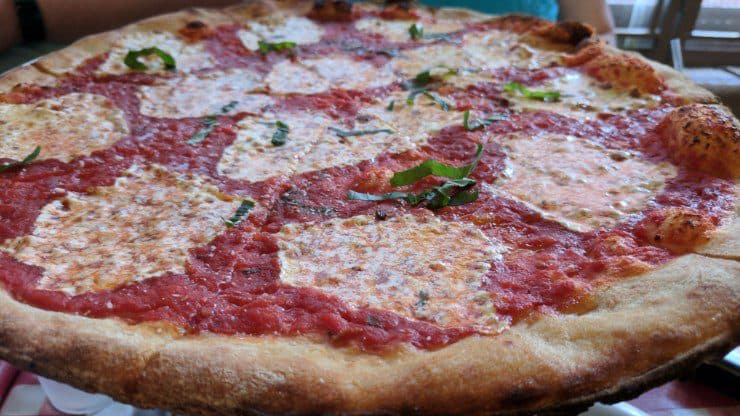
Of the four of us, I was the only one who liked Lombardi’s best. I thought the crust was better, and it had more tomatoes. I thoroughly enjoyed going to Lombardi’s and Grimaldi’s. At each place, we intersected with the history of pizza in this country and in New York and Brooklyn. Having been inspired by the trip, I finally made my own version of Neapolitan pizza after returning to Ohio from New York. I use sliced mozzarella and sliced provolone. I also use the San Marzano tomatoes and pulse them a few times in a Ninja blender Randi and Shaun gave us. I had a little to much dough for my crust, but other than that, it was a very good pizza — better than Grimaldi’s and better than Lombardi’s. It was not, however, better than Pizzeria Regina in Boston. I am closing in, but I am not quite there yet.
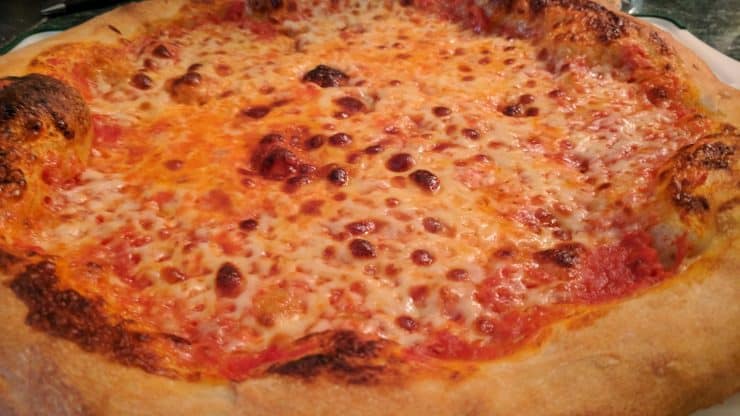
If you find yourself in Manhattan, and specifically, Little Italy, do yourself a favor and try a pizza from America’s first pizzeria, founded in 1905. (While it is the first, it is not necessarily the oldest. The restaurant closed for about 10 years before reopening.)
p.s. If you are interested in learning how to properly make a Neapolitan pizza, you can learn from the masters in the videos below.
PWP might earn a commission when you make purchases through links in this post. Learn more about how PWP generates income.
Bobby Warren has been making pizzas since he was in high school. He first started cooking pizzas at Lovece’s Pizza Palace in 1980. Since then, he has been on a quest to learn and teach others how to make the best pizza at home. When he is not making pizzas, he is working as an SEO specialist for publishers and digital marketing agencies around the United States.

